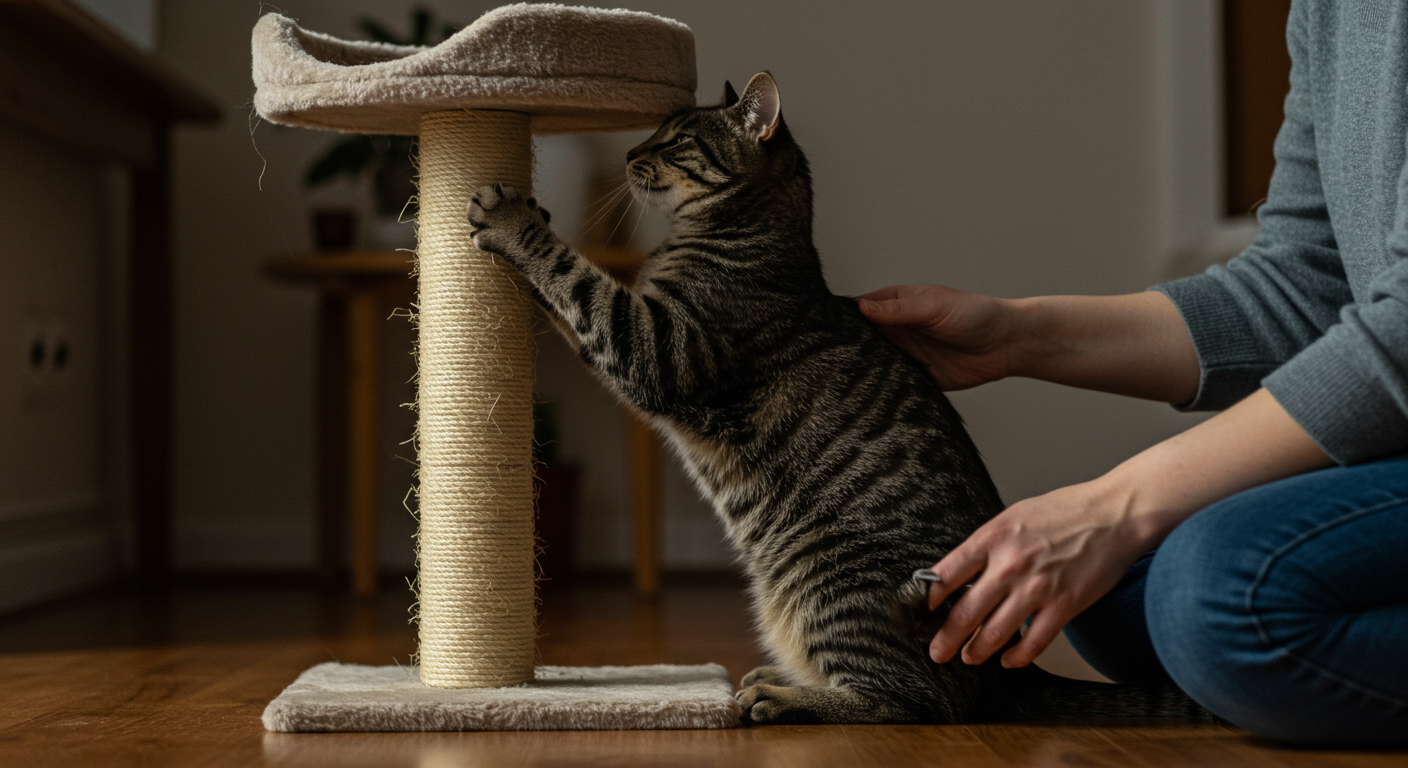As an experienced cat parent, you understand the unique joys and challenges of feline companionship. One common issue is destructive scratching, which can lead to damaged furniture and frustration. This comprehensive guide offers advanced strategies to redirect your cat's scratching instincts, protect your home furnishings, and foster a harmonious living environment. 
Deep Dive into Cat Scratching for Experienced Owners
Experienced cat owners often face more complex scratching behaviors, such as scratching due to stress, boredom, or marking territory. Understanding the underlying causes is the first step toward effective solutions. Consider your cat's environment, daily routine, and any recent changes that might be contributing to the behavior.
Advanced Strategies and Insights
Strategic Placement of Scratching Posts
Move beyond simply providing a scratching post; strategically place them in areas where your cat frequently scratches. Consider the material, size, and orientation. Some cats prefer vertical posts, while others prefer horizontal scratchers. Experiment with different types, such as sisal, cardboard, or carpeted posts, to find what your cat loves.
Environmental Enrichment
Cats scratch for multiple reasons, including to sharpen claws, stretch, and mark territory. Enriching their environment with interactive toys, puzzle feeders, and climbing structures provides outlets for these natural behaviors. This helps reduce the likelihood of them directing their scratching towards your furniture.
Nail Trimming & Maintenance
Regular nail trimming is crucial. Introduce nail trimming early and make it a positive experience. If your cat resists, try using a nail grinder or seeking professional grooming help. Consider using nail caps if scratching persists.
Optimizing Your Cat's Environment to Deter Scratching
Applying Deterrents to Furniture
Use commercially available deterrent sprays or create your own using a mixture of water and essential oils like lemon or orange. These scents are generally unpleasant for cats. Test the spray on an inconspicuous area of your furniture first. Double-sided tape or aluminum foil can also be used to make surfaces less appealing.
Redirecting Scratching Behavior
When you catch your cat scratching furniture, gently redirect them to an appropriate scratching post. Reward them with praise or treats when they use the post. Never punish your cat, as this can create anxiety and worsen the behavior. Consistency is key.
Case Study: Achieving Scratch-Free Furniture
[Include a fictional case study here of a cat owner and their cat and the specific process they went through to fix the problem, include details on how the owner changed the cat's environment to help with scratching.]
Navigating Complex Pet Challenges
Sometimes, destructive scratching is related to underlying stress or medical conditions. If you've tried the above strategies without success, consult with a veterinarian or a certified cat behaviorist. They can help identify and address any medical or behavioral issues contributing to the problem.
Integrating Advanced Care Practices
Consider introducing clicker training. Use a clicker to mark the desired behavior (scratching the post) and immediately reward with a treat. This positive reinforcement technique can be highly effective in shaping your cat's scratching habits.
Long-Term Wellness & Longevity Tips
Regularly assess your cat's environment and make adjustments as needed. Provide fresh scratching surfaces and rotate toys to keep your cat engaged. Consistent enrichment and positive reinforcement are essential for long-term success. Ensure the cat has a healthy diet. Provide plenty of fresh, clean water. Schedule regular vet check-ups for your cat.
Expert-Level Pet Care Insights
- Multiple Scratching Options: Offer various scratching surfaces (vertical, horizontal, angled) in different materials to satisfy your cat's preferences.
- Scent Marking: Use pheromone diffusers to create a calming environment and reduce territorial behaviors.
- Positive Reinforcement: Reward desired scratching behavior consistently.
- Environmental Analysis: Regularly assess your cat's environment, and make changes to enrichment opportunities as needed.